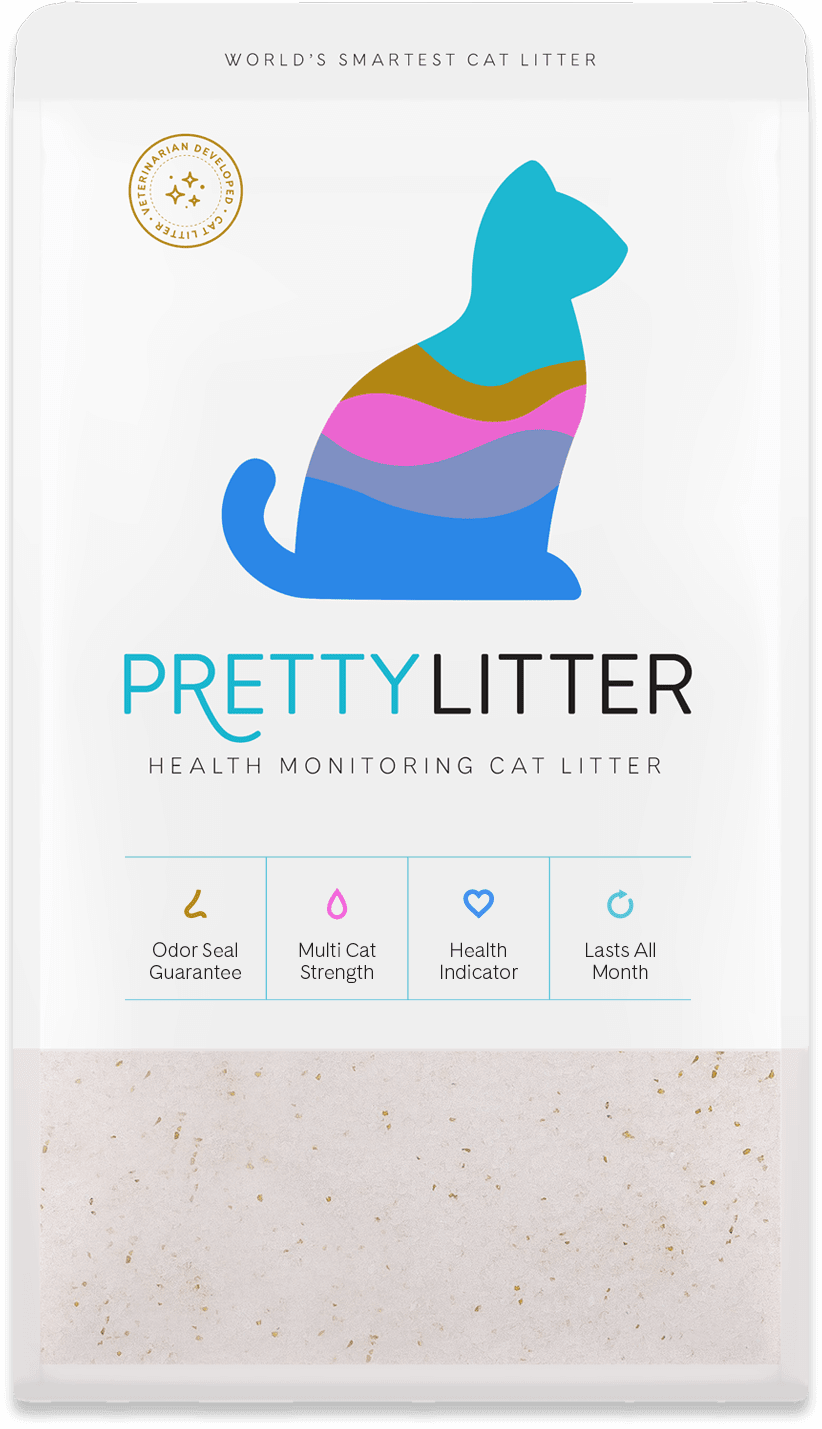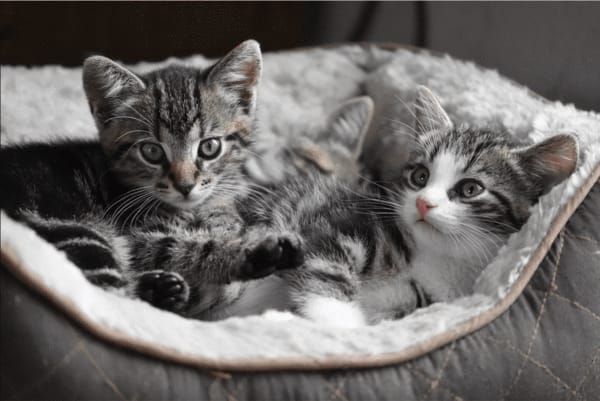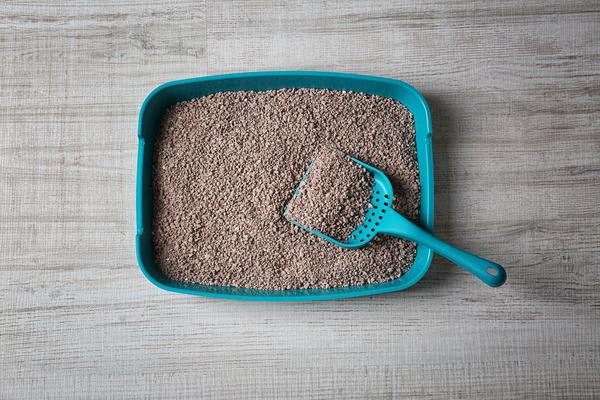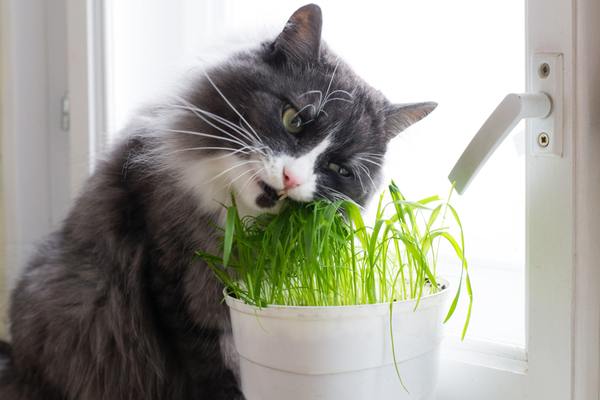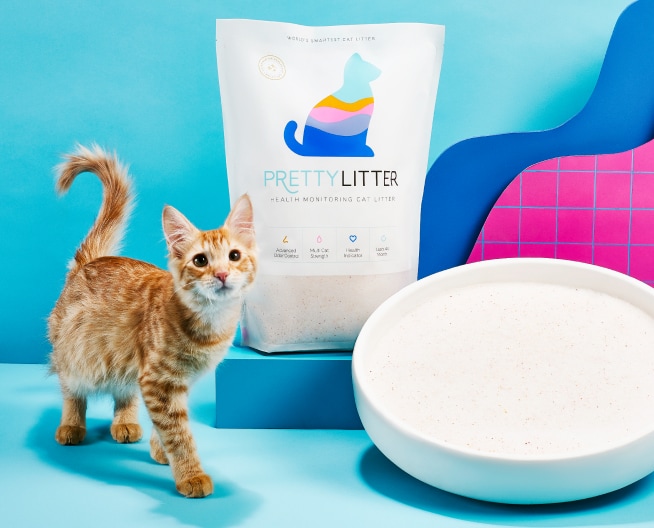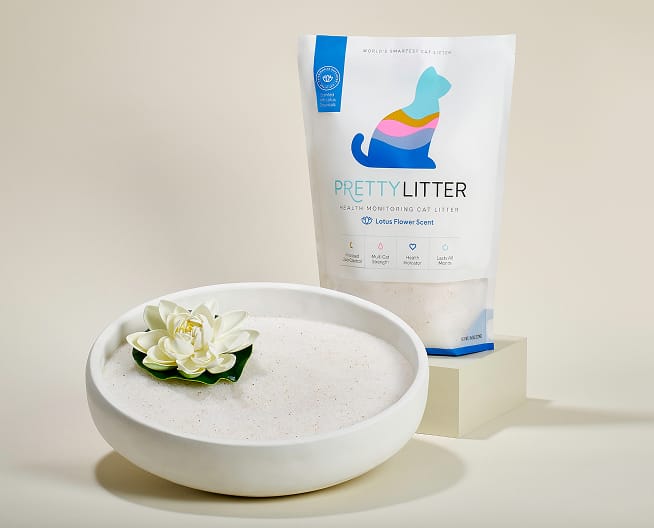August 4, 2023 |10 min read
6 Home Remedies for a Cat UTI

Written by

Updated Oct 23, 2025
Believe it or not, your cat’s potty breaks can tell you a lot about their overall health. As you’re cleaning the litter box, you can examine their stools, urine production, and urine frequency to get a good gauge on whether or not something is wrong or if everything is just business as usual. With a health monitoring litter, this can make the guessing game that much easier when trying to identify if something is wrong.
One of the most common issues cat owners can quickly determine is whether or not they have a urinary tract infection (UTI). Don't know what to give a cat for UTI relief? If you think your feline friend has a urinary tract issue or another urinary problem, this article is here to help you with everything from identifying symptoms to home remedies for cat UTI prevention.
What is a Cat UTI?
Bladder stones, a bladder infection, urine crystals, and a urinary obstruction are all common feline urinary tract issues that a cat may face. While an actual urinary tract infection may not be the most common of all the urinary problems it is still important for feline parents to be aware of the possible symptoms. A cat UTI occurs when bacteria travels up the cat’s urethra into the bladder, leading to a bacterial infection that causes discomfort and inflammation.
Without treatment, these infections can lead to inflammation, urinary pain, and even dangerous blockages.
What are the symptoms and signs of a cat UTI?
Although cat urinary tract infections can be a dangerous concern, the good news is that symptoms are often easy to spot.
The most common signs or cat UTI symptoms include:
- Only being able to urinate a small amount
- Howling or crying while urinating
- Excessively licking their genitals
- Urinating outside of the litterbox/in inappropriate places
- Frequent or prolonged attempts to urinate
Cat UTIs vs Other Urinary Disorders
Feline UTIs are relatively rare, but other urinary disorders— like feline idiopathic cystitis (FIC) or urinary crystals in cats— are much more common. If you suspect your cat has a UTI, talk to your veterinarian right away because it could be another urinary issue.
One of the most common urinary issues that plagues our kitties is urinary crystals. There are two types of crystals, struvite and oxalate. Both of these crystals are caused when there is an imbalance in a cat’s urinary pH. These tiny, microscopic crystals can irritate the inside of the bladder and urethra, making it difficult for your cat to urinate and causing urethral obstruction. These urinary issues can lead to serious medical conditions such as kidney stones or urinary blockage, or bladder stones in cats, which can be fatal.
Another urinary issue in addition to a feline UTI is feline idiopathic cystitis or FIC. FIC presents itself in a similar way as a urinary crystal or a UTI, but there is no root cause of the problem. Vets agree that some common causes could be stress, dehydration, a small urethra, or inflammation in the bladder, but there's no way to know for sure without ruling out other causes (such as a bacterial infection). This urinary issue can also become extremely serious if your kitty is unable to urinate.
All of these urinary conditions are more likely to affect male cats because their urethra is much smaller than in female cats. Some vets describe a female cat’s urethra as about the same diameter as a milkshake straw and a male cat’s urethra as the diameter or a coffee stirrer. However, female cats can still have these urinary problems.
What to do if Your Cat is Having Urinary Issues
If you suspect that your cat has a UTI or another urinary problem, visit your veterinarian immediately because these issues can turn into a bigger problem, such as a urinary blockage or urinary tract disease.
Your vet may perform:
- A urine culture to test for bacteria
- A urinalysis to evaluate pH levels, blood, and the presence of crystals
- Additional imaging or bloodwork if bladder stones or kidney issues are suspected
Based on results, treatment may include antibiotics, pain relievers, and dietary changes. In many cases, your vet will recommend a prescription urinary diet for cats to help restore and maintain urinary health.
6 Ways to Treat a Cat UTI at Home
Professional recourse is the safest bet for cat urinary tract infection recovery.
That being said, there are a few home remedies you can try to prevent UTIs in cats or to help avoid urinary problems from popping up in the first place. And if your cat is also experiencing vomiting as a sign or symptom of their UTI, take a look at our article on home remedies for cat vomiting to help alleviate your cat’s pain as well.
#1 Increased Water Intake
Hydration is the most important factor for preventing cat UTIs naturally. The best thing you can do to improve your kitty’s health is to make sure they are getting enough water. The more your cat drinks, the more diluted their urine becomes, flushing out bacteria and crystals that may cause trouble.
Ways to encourage water intake:
- Switch to wet or canned cat food
- Add extra water to food (broth or filtered water)
- Use cat drinking fountains to encourage more sipping
- Keep fresh, clean water in multiple locations
This simple lifestyle change is one of the best natural remedies for cat UTI prevention.
#2 Reduced Stress
Stress is a major trigger for feline idiopathic cystitis (FIC) and other urinary tract problems. Creating a low-stress environment is a powerful home remedy for cat UTI prevention. To reduce the stress in your home, try these strategies:
- Provide safe hiding spots and vertical spaces for your cat
- Minimize changes in routine, loud noises, or unfamiliar guests
- Offer regular interactive play sessions
- Avoid overcrowding in multi-cat homes
#3 Prescription Diets
While prescription diets don’t treat bacterial infections like UTIs, they help promote a healthy urinary environment and reduce the risk of the other conditions we mentioned, including both struvite and oxalate crystals and feline idiopathic cystitis.
#4 A Clean Litterbox
If your cat is experiencing a feline UTI, you want to make sure their litter box is always super clean, so they feel comfortable going. If you live in a multiple-cat household, you should also make sure you have one more litterbox than you have cats. For example, if you have two cats, you should have three litterboxes. This ensures that each kitty always has a clean, quiet place to go!
#5 Homeopathic UTI Supplements
There are some homeopathic options for cat UTI treatments once you see the clinical signs of a urinary issue forming. Most of these products contain some variation of cranberry, d-mannose, and other natural supplements. These can come in a liquid you give your cat, as a food topper, or even in treat form.
#6 Try Anti-Inflammatory Supplements
In addition to supplements specifically designed for cat urinary tract infections, there are also some supplements you can try to help alleviate your kitty’s bathroom woes.
One remedy vets recommend is a synthetic pheromone diffuser. These diffusers emit the same pheromones that cats do naturally to calm down. Therefore, they have been shown to reduce stress, anxiety, and bad behavior.
You can also try CBD to calm your kitty, although, talk to your doctor before trying one. You’ll want to make sure you get a CBD tincture that doesn’t contain any THC.
Urinary acidifiers may be another great alternative for urethral obstruction or another underlying cause. Acidifiers ensure the cat is free of any feline urinary tract infection, ultimately caused by the blocking of a cat’s urethra.
Lastly, some vets recommend Cosequin, which is usually a supplement to treat joint pain and arthritis. But, some experts have seen a correlation between Cosequin and reduced bladder inflammation.

Importance of Detecting a Cat UTI Early
Cat UTIs are not fun to deal with for you or your four-legged friend, but knowing the signs and symptoms as a cat parent can help you detect a UTI as soon as possible and begin treatment.
In addition to UTIs, there are other, more common urinary issues that can affect cats, including urinary crystals and FIC. These conditions can be extremely serious and potentially fatal if not addressed quickly. Monitor your kitty’s bathroom breaks to get a good gauge on their health and take note of how often they urinate, how much comes out, whether there is blood in the urine, or if they are straining to urinate.
Don’t think your cat is experiencing a bladder infection or UTI, but still know something just isn’t right? PrettyLitter can be especially helpful here. Our health monitoring litter changes color and reacts to shifts in the pH of your cat’s urine, making it easier to spot potential urinary problems early and giving you more peace of mind. Get started with PrettyLitter today to help you catch potential urinary problems early so you can get your cat the care they need as soon as possible.
Sources:
- VCA Hospitals. Urinary Tract Infections (UTIs) in Cats. https://vcahospitals.com/know-your-pet/urinary-tract-infections-utis-in-cats
- Alexander Animal Hospital. How to Treat Your Cat’s Urinary Tract Infection. https://www.alexanderanimalhospital.com/treat-cat-urinary-tract-infection/
- PreventiveVet. Urinary Tract Disorders in Cats. https://www.preventivevet.com/cats/cat-uti-signs-and-treatment
